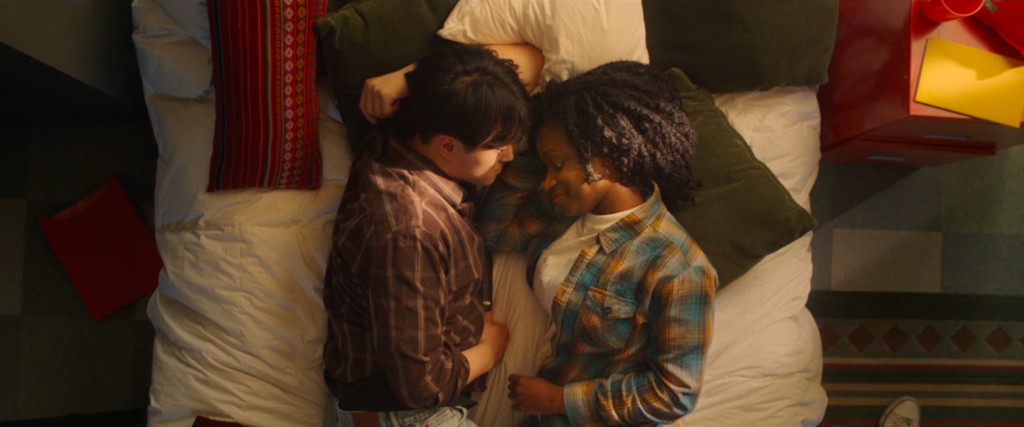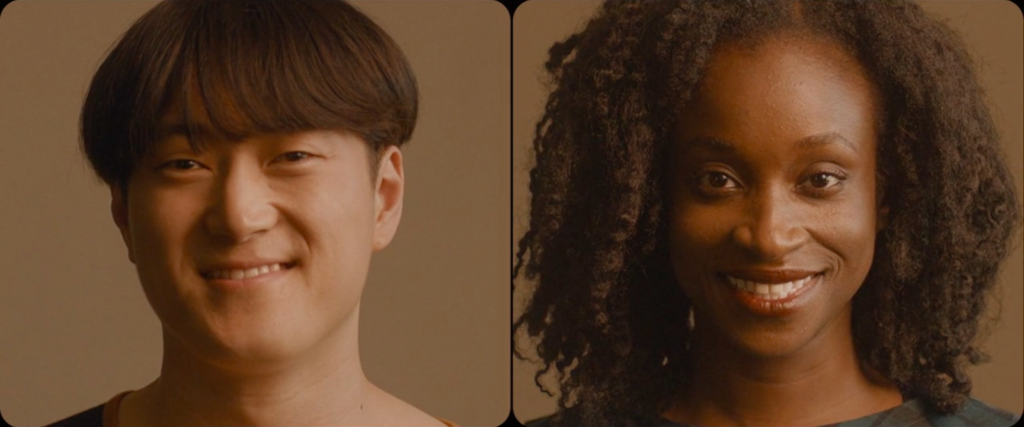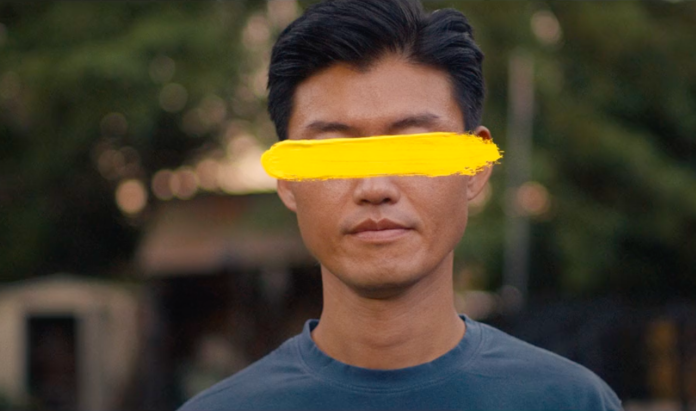by Felix Poon, AsAmNews Intern
Anton Song watched the 2016 Oscars and saw Chris Rock and Sacha Baron Cohen make East Asian people the butt of their jokes.
“I was just incredibly angry that in the year 2016 it was still possible to get on the biggest entertainment stage in the world, and hurl slurs at East Asians with zero consequences,” Song said, “and the image that’s burned into my mind is the audience laughing.”
Song felt compelled to respond but wasn’t sure what to do.
It was around this time that Song saw his first slam poem live. He thought it would be powerful to combine a slam poem with visuals. So he wrote a script about a young Asian American man, and “his journey from self-hate toward self-love.” He contacted his video producer friend, Joan Digba, who put him in touch with a director, Jimmy Vi. They assembled a cast and crew and put together a visual poem called Malcolm. The video released today on Youtube.
Malcolm is based on two significant moments from Song’s personal life. The first was when he watched a video of Malcolm X delivering his famous 1962 speech, Who Taught You to Hate Yourself. Song said he had an epiphany watching the video.
“It communicated a very clear understanding of what white supremacy is and how it is maintained, and until that point in time, I wasn’t really aware of the extent to which this kind of programming had affected me,” Song said.
In Malcolm, Song’s analog is an East Asian man named Anon. Anon learns from his college professor, a Black man, “how to be Asian in America, how to be anything other than White in America.”
The second significant moment the video is based on is Song’s experience dating a Black woman. Song described it as the first time he felt seen as a human being as opposed to being seen as a stereotype.

“It really erased this enormous multitude of insecurities that had built up in me over the span of many years of media consumption and living in the shadow of American film, television, and media,” Song said.
This experience is portrayed in the video by Ada, the Black woman in the video who’s seen lying in bed with Anon caressing his face as the narrator asks “who taught you to love yourself?” She then runs her fingers gently across his skin and the narrator asks “who taught you to love the color of your skin?”
Anon’s mother and father are also credited for Anon’s journey toward loving himself, as “a woman who taught you the language of your ancestors,” and “a man…who worked 14 hour days so you could have the chances he never did.” But viewers will notice that it’s primarily the Black characters in the video who inspired his journey away from self-hate toward self-love.
“The civil rights struggle was incredibly important for all people of color, and that mantle was taken by African Americans who took leadership, and made incredible sacrifices,” Song said about the prominence of Black characters in the video.
Song believes its important to honor the work African Americans have done for all people of color in America.
“All people of color in the United States, and broadly in the West more generally…owe respect and gratitude to our African American forebears,” Song says.
Asian Americans have shown gratitude for, and solidarity with, African Americans as far back as the civil rights movement. The most prominent examples are Yuri Kochiyama’s friendship with Malcolm X and her participation in Black nationalist movements, and Grace Lee Boggs and her work with the Black Power movement.
In more contemporary times, Eddie Huang in his 2013 memoir Fresh Off the Boat—which the ABC sitcom of the same name is based on—credits hip hop culture for informing his understanding of race and race politics.
But gratitude toward Black people for racial justice has, at times, spilled into an uncomfortable sense of expectation and entitlement. That’s what happened at the 2016 Oscars—the same one that inspired Song to make the video Malcolm—when Asians and Latinos in the Twitterverse criticized Chris Rock for leaving out other people of color in his scathing #OscarsSoWhite monologue.
Among them was Ming-Na Wen who tweeted, “Chris Rock hasn’t once brought up other minorities who have worse odds at the #Oscars.”
In response to those critiques, writer Mikki Kendall started the #NotYourMule hashtag on Twitter, in reference to a line in Zora Neale Hurston’s novel Their Eyes Were Watching God, “De n*gger woman is de mule uh de world so fur as Ah can see.”
“I was just tired of seeing the same old demands for Black labor with little or no support of Black people,” Kendall explained to the Daily Dot.
Some clarified their positions in response to #NotYourMule, as in the case of Filipino American writer Jose Antonio Vargas. Vargas wrote in his essay Here’s What I’ve Learned About NotYourMule, that he was hoping for Rock to use his platform to expand the #OscarsSoWhite conversation beyond a Black-and-White issue.
Jeff Chang in his essay The Odds: On Cultural Equity, says that we need to have the conversations about #OscarsSoWhite and #NotYourMule simultaneously. Chang juxtaposed the sense of a new “golden age of representation” against data that shows that Hollywood remains overwhelmingly white, especially in positions of authority and power.
“Perhaps one day we may no longer need an #OscarsSoWhite hashtag. But we will still have to deal with the kinds of inequities that made #NotYourMule,” Chang concludes at the end.
In other words, we may be well-represented in film someday, but if power and access still lie in the hands of White people, then there will always be a chance that #NotYourMule happens again.
Unlike the tweets from Ming-Na Wen and others that sparked the #NotYourMule hashtag, Malcolm makes no demands or expectations of anybody. Viewers can interpret what they will from the character Anon and his relationship with the Black people in his life, and what it says, if anything, about the bigger conversation around solidarity and equity between different groups of color.
To Phuong Nguyen, Assistant Professor of U.S. History at Cal State University, the video was “subversive” and “a breath of fresh air.” He told AsAmNews that Black women and Asian men “have a lot in common as far as racialization and stigmatization in the dating marketplace so it makes some sense to turn a negative into a positive.” By showing a romance between an Asian man and Black woman, Nguyen said that it subverts the typical Asian-White binary, and represents solidarity with African Americans.

To the video makers, Malcolm is a message of solidarity around a shared collective experience as people of color. Digba, the producer of the video, identifies as African Canadian.
“We also have issues around how we’re depicted in the media,” Digba said, “sooner or later, you start to internalize that as your own identity…[and] there are a lot of harmful stereotypes out there.”
Digba described both the content and the production of Malcolm as “the harmonious work of Blacks and Asians working to lift each other up.”
Vi, the director of Malcolm, agreed that it was an uplifting experience. He recalled the moment when the cast and crew came together for the first shot, “I walked in… and it kind of hit me. I was like, wow, this is the first set I’ve ever been on…where there were more people of color than there were White.”
Vi said that he’s struggled to assemble diverse crews that are inclusive of different racial and gender identities. He recalled fellow crew members, like him, were struck by just how diverse this team was. For them, working with a crew that was predominantly Asian American with Black and White allies, and an even mix of men and women, was a powerful experience.
“It showed [to us] that we do exist…. Asian directors do exist, female crew members do exist, female directors do exist… you just have to look,” Vi said.
For Vi, the project is already a success even before the first viewer clicks the play button.
“I think the fact that we had the guts to say that we’re going to make it and we actually made it is very powerful,” he said.
But if there was one person that Vi does care about who this video affects, it’s Anton Song.
“Anton told me [that] being on set, seeing all this come to life made him feel something that he’s never felt before, which is [that] he felt like things were right,” Vi said. “He felt like [writing] is what he should be doing all the time. For me to make something like this and make something for Anton, that affected him this much, I think that’s more than successful. Anything that happens after that is just bonus.”
Song is no stranger to the power of media. One of his heroes, Malcolm X taught him that. When contemplating the power of media, Song recalled one of Malcolm X’s most famous quotes word for word—“The media’s the most powerful entity on earth. They have the power to make the innocent guilty and to make the guilty innocent. They control the minds of the masses.”
Song sees film as the most important storytelling vehicle of our time. If we don’t see ourselves on screen, he argues, “it’s almost as if it didn’t happen.” That’s why he made Malcolm. That’s why he wants to tell these stories. Otherwise, he says, these stories would be lost.
AsAmNews has Asian America in its heart. We’re an all-volunteer effort of dedicated staff and interns. Check out our Twitter feed and Facebook page for more content. Please consider interning, joining our staff or submitting a story.



RE: Video Makers Release Visual Poem Malcolm-What it Says about Asian/Black Solidarity and Media Representation: Thanks Felix for this awesome well researched piece! Appreciate the depth and seriousness with which you approached these topics.